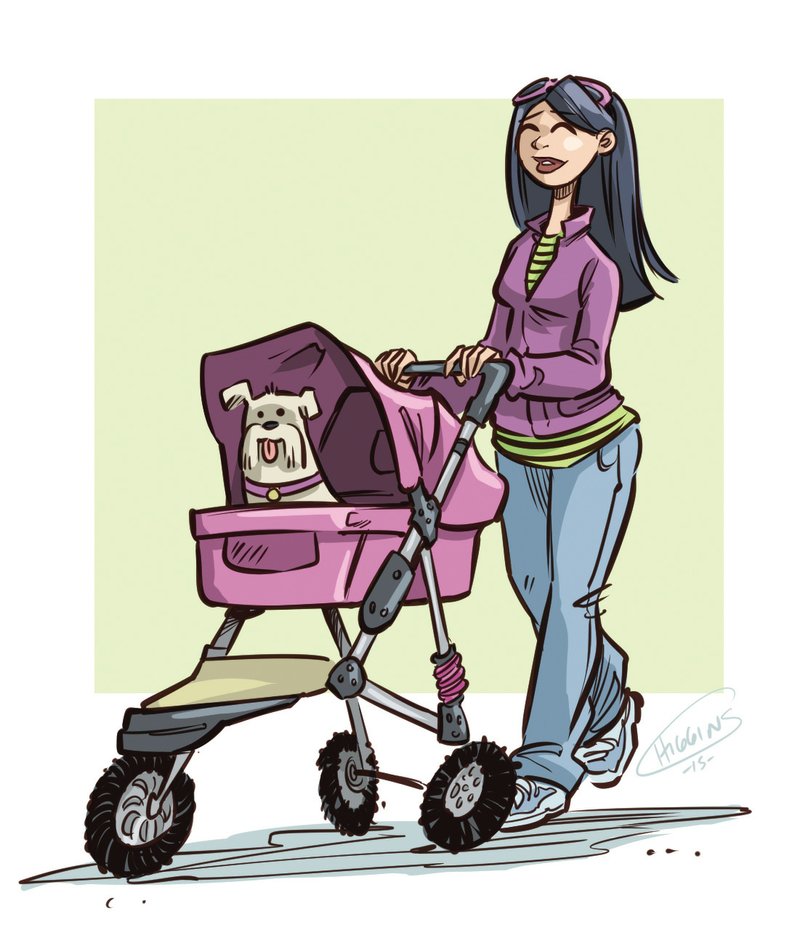Our newly adopted dog is about to start heartworm treatment and the vet said he won't be able to go for walks or even play in the house for weeks. We hate for Higgins to be stuck in the house for that long and want to get a stroller for him so we can move him around in the house and take him for walks. Do you have any ideas on what to look for? Higgins weighs about 20 pounds.
Forced "bed rest" for a normally active dog can seem like a prison sentence, plus it's no fun for the owners who have to enforce it. Some type of stroller or wagon may be just what the dog needs to keep his spirits up, but you might want to run the idea by the veterinarian first to make sure it's what the doctor ordered.
When you have the green light on wheeling your dog out for a stroll, there are quite a few options available. If your dog has a calm temperament and you're sure he won't try to jump out of the wagon, Vetstreet.com suggests using something as simple as a child's wagon. If you go the wagon route, try to get a newer model with tall, removable sides.
An alternative is to buy a used baby stroller at a yard sale or thrift store, then outfit it for your dog. My mother found an old stroller for her elderly chihuahua last year, but neither Ashley nor my dog, Simone, would lie down in it until we added a pillow. After that, they seemed comfortable with being wheeled around like royalty.
If you want to get really fancy, you might go for a high-end covered doggy stroller such as the Burly Tail Wagon (about $400), which looks like a pup tent on wheels. While the Tail Wagon rides low to the ground and comes with a tow arm and hitch so it can be pulled behind a bicycle, it also has a handlebar for use with a stroller converter kit that's bought separately. The wagon has a roll-up cover and mesh side windows so that your dog can check out the scenery.
The Pet Gear Expedition ($260) stroller is similar to the Tail Wagon, but isn't adaptable to be pulled behind a bike. A third choice is the Dogger, which is taller than the Expedition and the Tail Wagon so it looks more like a traditional stroller. It's suitable for small dogs (and cats); the others can hold dogs weighing 75-plus pounds.
After you find the appropriate stroller for Higgins, you'll need to give him a chance to adjust to it before taking him out for a spin. In an article at Vetstreet.com, veterinarian Mikkel Becker advises first introducing a dog to the stroller in the house. Treat it as you would a regular crate. Secure the wheels so the stroller or wagon doesn't move, then either put the dog in it or make it attractive with a scattering of treats. If you lift him into it, make sure you praise and pet him so he'll understand it's a good thing. If he acts nervous, take him out and try again later.
Leave the stroller in the house where your dog can explore it on his own, plus get used to its presence. You can encourage exploration by putting a chew toy or food puzzle inside the stroller. When the dog is comfortable sitting in the stroller, take him for short rides in the house. Talk soothingly to him and reward him with treats when he remains calm. When you begin to take him outside, limit his first rides to the yard or driveway. Don't hit the streets until you're sure the dog is completely on board with the stroller experience.
When taking the dog for rides outside the house, Becker says, make sure the dog isn't able to jump out of the stroller. That's easy with models that include a zipped cover. With others, you can clip the dog in with a leash. Attach the leash to a harness instead of a collar so there's not a chance of choking him if he tries to get out or gets caught on something.
With the right wagon or stroller and proper training, Higgins should have a smooth ride on the road to renewed health.
Family on 03/04/2015
